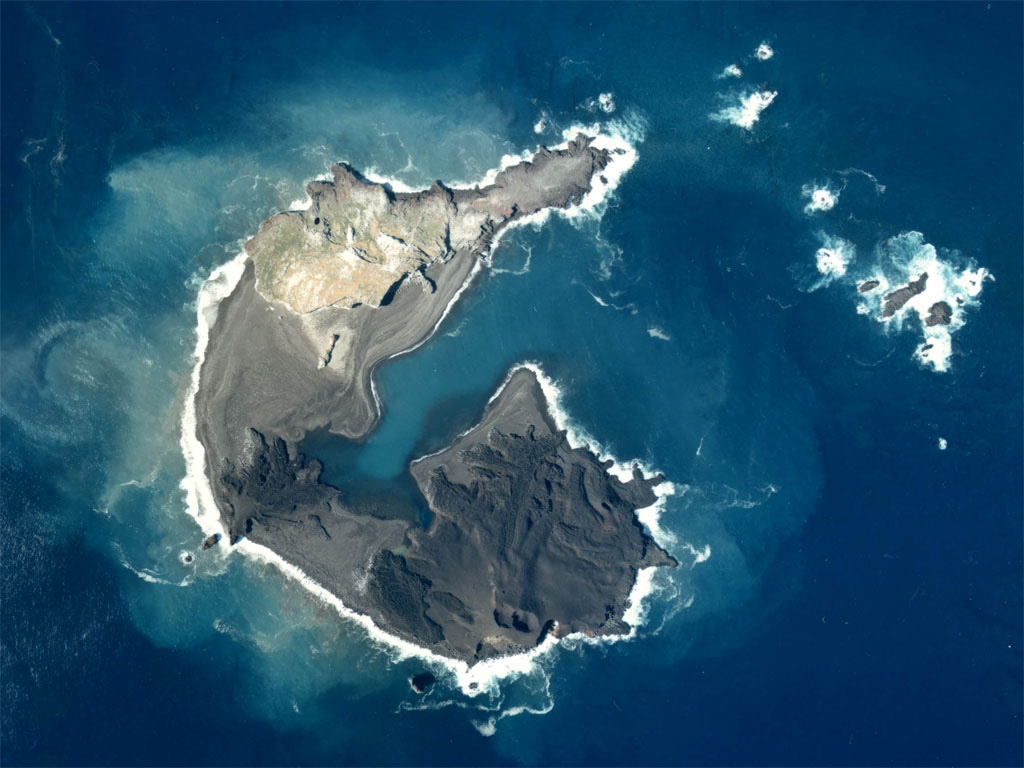People set foot on new island formed by huge undersea volcanic eruption
What was once a tiny dot in the middle of the Pacific Ocean has grown to 12 times its original size.
For the first time, Japanese researchers have landed on a new island that sprung up in the Pacific Ocean during a volcanic eruption, swallowing its neighbouring island. What was once a tiny dot in the middle of the Pacific Ocean has grown to 12 times its original size.
Nishinoshima was a rocky outcrop barely 650 metres (710 yards) long and 200 metres (240 yards) wide. It was enlarged in 1974 when a set of eruptions created a new section, but then came the big one: In November 2013, a nearby seafloor volcano erupted, spewing enough material to rise above the waterline and forming a new island just 500 metres from Nishinoshima. Four months later, the new and the old islands had merged, becoming one island.








Researchers from Japan's environment ministry, who swam the final distance from a small boat to the island to minimise biological contamination, were the first people to step foot on the island in recent history. Researchers landing on the island collected rock, plant and insect samples for ecological research. They also observed the first colonisation of the island by masked gannets, a large seafaring bird.
One of their main goals, the head of the research party said, was to learn how volcanic islands are created. "We hope to gather those different lava samples, and accumulated volcanic ash, to study the process of growth of a volcanic island," said Minoru Takeo, professor of volcanology at Tokyo University. Researchers also planted several seismic monitors around the uninhabited island to record future geological activity.



Nishinoshima, also called Rosario or Niijima, is located nearly 1,000 kilometres south of Tokyo and is part of the Ogasawara archipelago. The island is so remote it takes nearly a day by boat to get there from Ogasawara, the closest inhabited island. Studying volcanoes is high priority in Japan which lies on the "Ring of Fire", a horseshoe-shaped band of fault lines and volcanoes around the edges of the Pacific Ocean that is home to more than 100 active volcanoes.
© Copyright IBTimes 2025. All rights reserved.






















